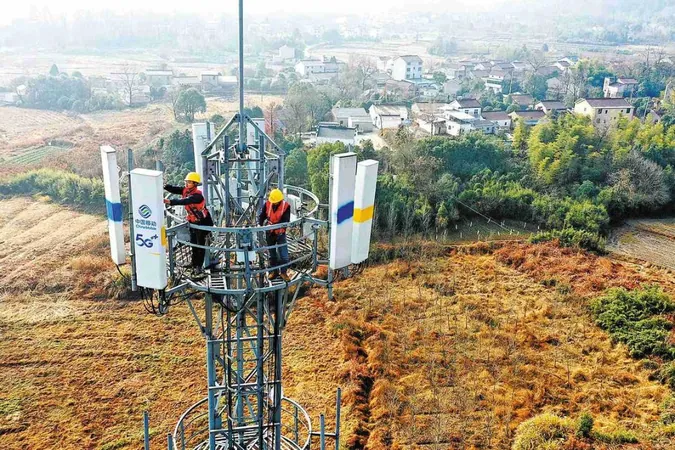
Skin Cancer Surge: The Hidden Risks for Outdoor Workers and What Employers Must Know
2025-08-28
Author: Yu
Skin Cancer: A Growing Threat
Skin cancer, including melanoma and non-melanoma types, has become the most diagnosed cancer globally. Alarmingly, in the UK alone, there were over 17,500 new melanoma cases reported between 2017 and 2019, alongside 156,000 cases of non-melanoma skin cancer from 2016 to 2018, according to Cancer Research UK.
The Shocking Global Trend
In a recent study, scientists revealed that a staggering 80% of cutaneous melanoma cases globally in 2022 were linked to UV radiation (UVR) exposure. With approximately 331,700 cases of this aggressive cancer identified worldwide, UVR emerges as the primary threat facing our skin.
Rising Risks and Warnings
In the UK, melanoma skin cancer ranks as the fifth most prevalent cancer, with case rates skyrocketing by 147% since the early 1990s and projecting a staggering 9% increase from 2023 to 2040. The British Medical Journal warns that melanoma deaths could surge by about 68% in the same period. This alarming trajectory highlights an urgent need for heightened awareness.
Advancements in Research
Recent improvements in cancer research underscore that while UVR is largely to blame for cutaneous melanoma, a subtype called acral lentiginous melanoma appears in darker-skinned individuals, accounting for nearly half of CM cases. Continued research efforts are essential to understand and combat this growing health crisis.
Implications for Employers and Insurers
As temperatures rise alongside skin cancer cases, outdoor workers are particularly at risk, leading to a potential surge in occupational claims. Legal firms are already gearing up to handle UVR-related skin cancer cases, indicating a looming challenge for employers and insurers alike.
Preventative Measures: Employers' Responsibilities
To combat this public health issue, employers must prioritize sun safety through comprehensive training and risk assessments for outdoor workers. Essential steps include providing ample sun protection like sunscreen, protective clothing, and encouraging regular application.
Essential Guidance from Health Authorities
The Health and Safety Executive (HSE) identifies outdoor workers, particularly in construction and agriculture, as heavy risk groups. Recommendations for these employees include wearing protective clothing, seeking shade during breaks, applying high-SPF sunscreen, and regular skin checks for unusual moles.
Navigating Legal Challenges
Legal complexities around causation in skin cancer claims make these cases challenging. The diverse causes of melanoma often complicate proving that an employer's negligence specifically contributed to the disease's development.
Looking Ahead: A Call to Action
With increasing heatwaves in the UK and a dramatic rise in melanoma cases, it’s paramount for all stakeholders—defendants, insurers, and employers—to stay vigilant and proactive in addressing this growing public health threat.




 Brasil (PT)
Brasil (PT)
 Canada (EN)
Canada (EN)
 Chile (ES)
Chile (ES)
 Česko (CS)
Česko (CS)
 대한민국 (KO)
대한민국 (KO)
 España (ES)
España (ES)
 France (FR)
France (FR)
 Hong Kong (EN)
Hong Kong (EN)
 Italia (IT)
Italia (IT)
 日本 (JA)
日本 (JA)
 Magyarország (HU)
Magyarország (HU)
 Norge (NO)
Norge (NO)
 Polska (PL)
Polska (PL)
 Schweiz (DE)
Schweiz (DE)
 Singapore (EN)
Singapore (EN)
 Sverige (SV)
Sverige (SV)
 Suomi (FI)
Suomi (FI)
 Türkiye (TR)
Türkiye (TR)
 الإمارات العربية المتحدة (AR)
الإمارات العربية المتحدة (AR)